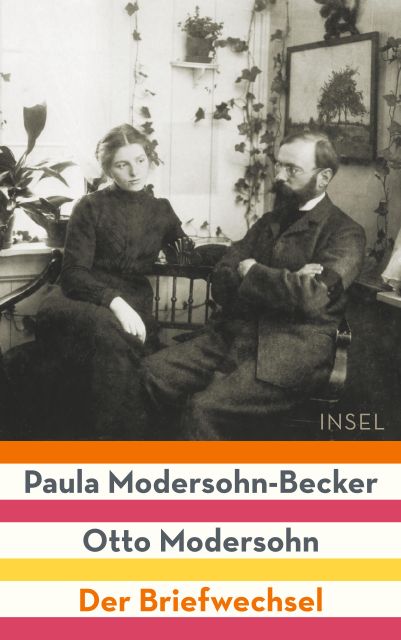“I want to meet him, that Modersohn guy.” Even after their first encounter at an exhibition staged by artists from Worpswerde, 19-year-old Paula Becker had an inkling that she would have much in common with the considerably older landscape painter Otto Modersohn. The rest is history – and you can now read a first-hand account of it for the first time: The correspondence between Paula Modersohn-Becker and Otto Modersohn, who would later become lovers and then spouses, first came out this October. The volume includes the build-up to their relationship as well as numerous diary entries by Modersohn. The pair wrote to each other throughout marital crises, birth preparations and even when they were considering divorce: Their tone was always intelligent and often amusing. Of course art is a much-discussed topic – they wrote about their own work as well as that of other early Modernist artists, whom Paula Modersohn-Becker grew to appreciate during her stays in Paris. In retrospect, Otto Modersohn’s early, self-ironic thoughts on the female painter appear almost prophetic.

Image via suhrkamp.de
It startles me. This little lass should paint better than you, by golly, that would be something! (...) My eyes are open. It’s going to be a race.
Roni Horn is an artist who works in images and text – though not necessarily always at the same time. In 2013, her large-format photographs populated both the SCHIRN Rotunda and Frankfurt’s cityscape. Bibliophile friends of the arts will love her books: In these, she addresses individual sayings, or the collection of presents she was given throughout her entire life as an artist. The most recent of her books was brought out by Steidl Verlag in late 2016: “Thr rose prblm” looks at the famous rose proverb. Using the collage technique, Horn has created a range of variations of the posy, some of which are downright hilarious.

In 1946, Helene Schjerfbeck’s obituary in Swedish “Hufvudstadsbladet” called her “the greatest female Scandinavian painter of all time”. As most Finns nowadays prefer to see their country as belonging to the Nordic rather than the Scandinavian region, the justified superlative correspondingly needs rephrasing. Yet in the accolade we can still sense a geographical attribution to a specific piece of earth with which one of the most important Finnish painters of all times should be linked. Schjerfbeck saw herself as a human being undeniably rooted in Finland – a country that had not yet become one at the time of her birth. That said, she also felt at home in the language and later also in the geography of Sweden, as well as time and again in Paris and in sunny Pont-Aven in her early years. The title to the artist’s first biography published in German pinpoints this relationship. Barbara Beuys’ book is simply called “Helene Schjerfbeck – Die Malerin aus Finnland” (Helene Schjerfbeck – the painter from Finland). The biographer masterfully covers the entire life of the artist despite only very few quotes surviving of the latter, and opens up social and political dimensions of her time along with detailed descriptions of her art works.

Image via: suhrkamp.de
Everyone can recreate Yoko Ono’s Fluxus performances with the aid of this this booklet, which has come out in various editions since its initial release. Some of the exercises sound easier to implement than others: “Step in all the puddles in the city.” (CITY PIECE, Herbst 1963) is certainly not as tough to do as “Keep coughing a year.” (COUGH PEICE, 1961) or “Throw a stone in the sky high enough / so it will not come back.” (THROWING PIECE, Spring 1964). Those who consider Yoko’s instructions less self-contained reading material and art work than precise instruction manual will of course have to comply with the cheeky foreword, too: “Burn this book after you’ve read it.”

Image via: daskunstbuch.files.wordpress.com
…and finally, a follow-up to the festivities
Collaborations are a popular form of artistic working practice. In the case of British painter Rose Wylie, who Ben Rivers portrayed in the August Double Feature, and interdisciplinary artist Fraser Taylor, collaboration turned into collision. The tongue-in-cheek programmatic title hints at a farewell to overly harmonious notions of working together. Wylie and Taylor set out to work for three days under the aegis of curator Alison Harley, collating the results of their co-work fanzine-style in a large newspaper format. And there was even more cooperation at play: Theseus Chan, in charge of the WERK series at Steidl Verlag, was responsible for the layout of the artistic result, which in turn was produced with the help of a whole team of other artists. The publication counters the loneliness in the studio often described by artists with an ode to friendship, intellectual kinship and differences.
